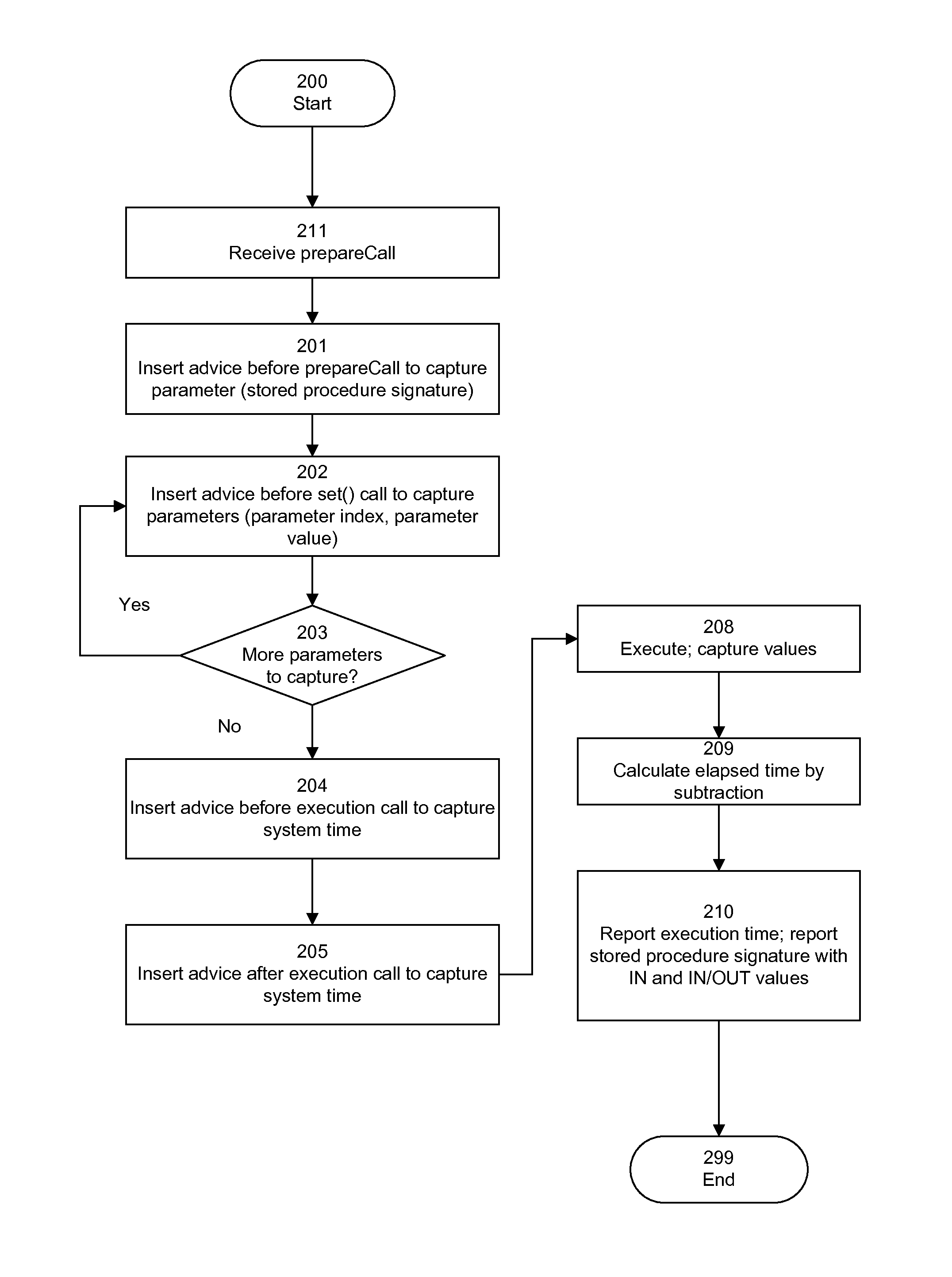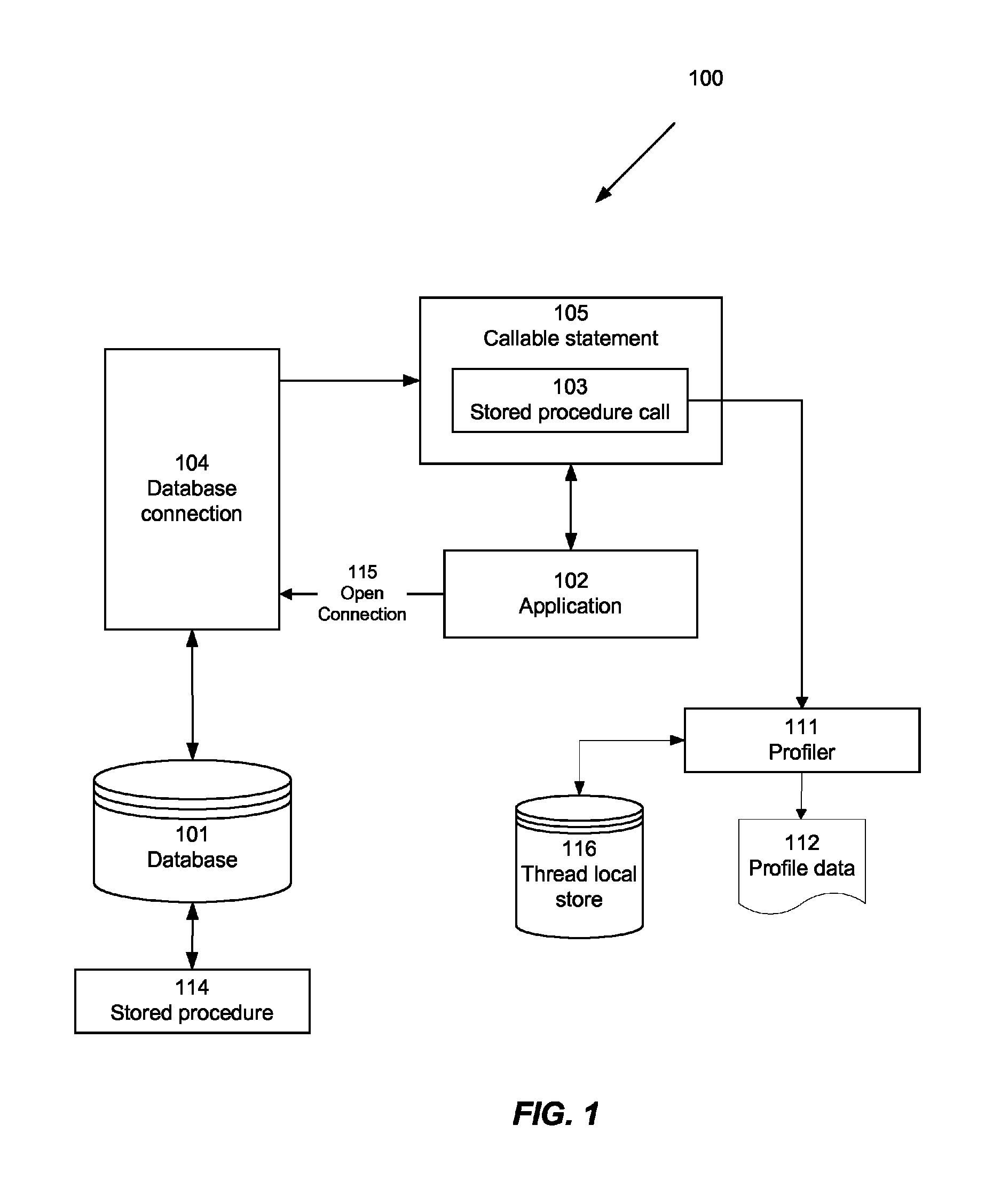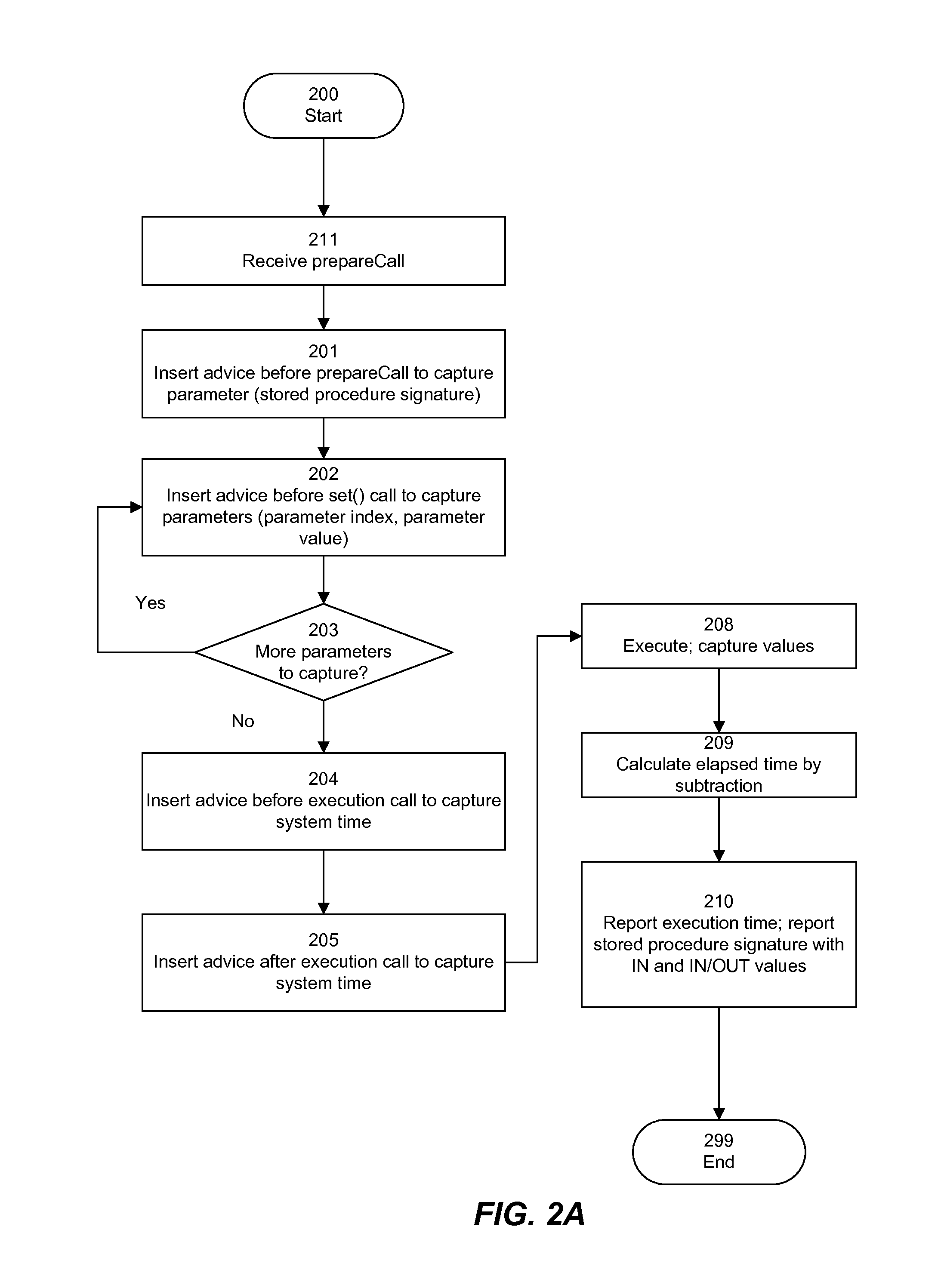Profiling stored procedures
- Summary
- Abstract
- Description
- Claims
- Application Information
AI Technical Summary
Benefits of technology
Problems solved by technology
Method used
Image
Examples
example
[0094]The following example is provided for illustrative purposes only. One skilled in the art will recognize that the particular steps and names are merely exemplary. The example will be described in terms of a call 103 to a stored procedure 114 named get_employee_id(?, ?, ?), which takes a first and last name of an employee as IN parameters and returns an employee Id as an OUT parameter. The question marks are included in the procedure call 103 as placeholders for IN and OUT parameters.
[0095]As described above, in order to execute a stored procedure 114 such as get_employee_id( ) using JDBC™, a callable statement object 105 is created. In one embodiment, callable statement object 105 is created by calling prepareCall( ) method 301 on the connection object. Thus, for the get_employee_id( ) procedure 114, in which “connection” is an active JDBC™ Connection object, the following JDBC™ code would create an instance of the callable statement object 105:
CallableStatement cstmt=connectio...
PUM
 Login to View More
Login to View More Abstract
Description
Claims
Application Information
 Login to View More
Login to View More - R&D
- Intellectual Property
- Life Sciences
- Materials
- Tech Scout
- Unparalleled Data Quality
- Higher Quality Content
- 60% Fewer Hallucinations
Browse by: Latest US Patents, China's latest patents, Technical Efficacy Thesaurus, Application Domain, Technology Topic, Popular Technical Reports.
© 2025 PatSnap. All rights reserved.Legal|Privacy policy|Modern Slavery Act Transparency Statement|Sitemap|About US| Contact US: help@patsnap.com



